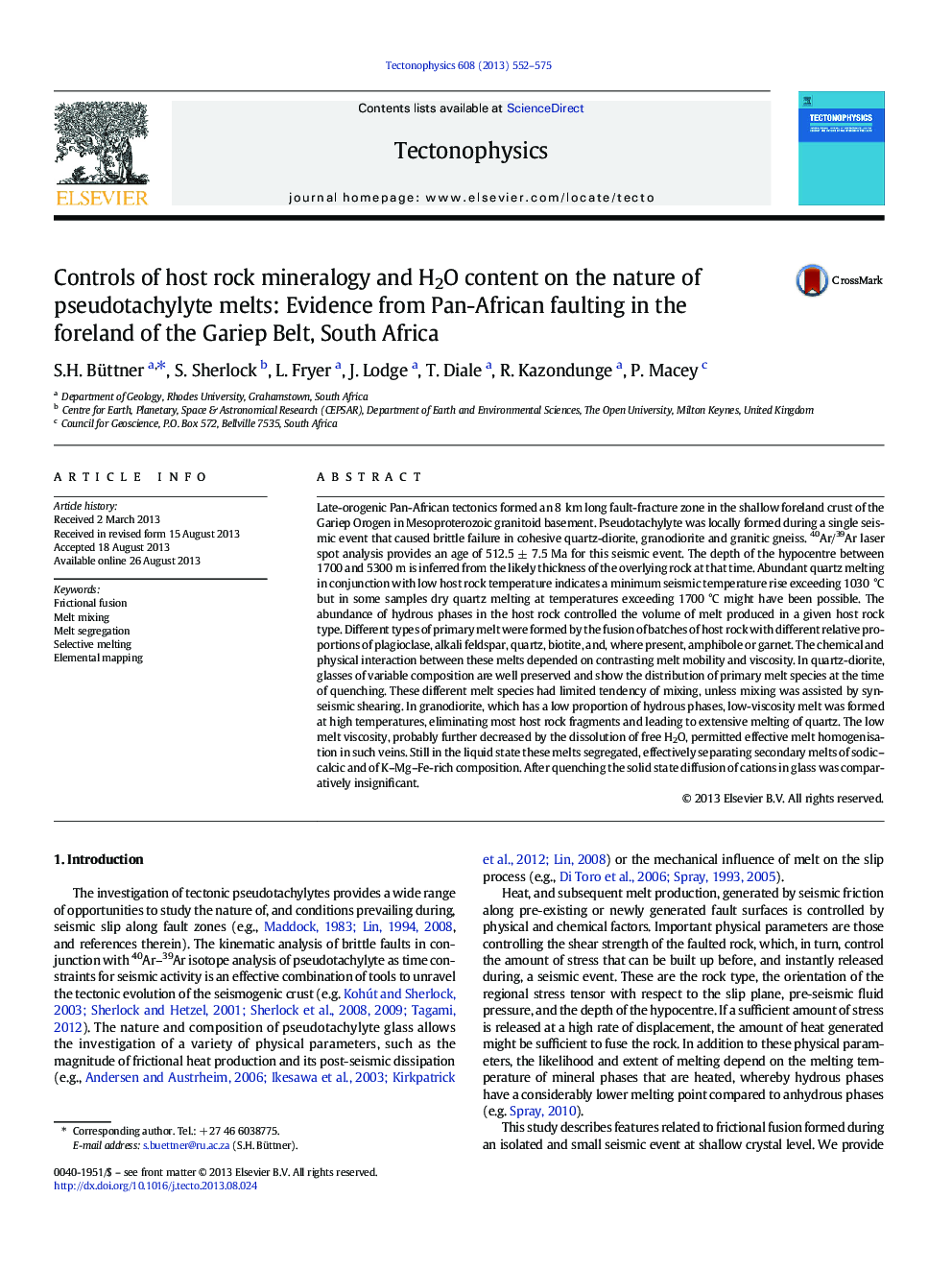| کد مقاله | کد نشریه | سال انتشار | مقاله انگلیسی | نسخه تمام متن |
|---|---|---|---|---|
| 6433980 | 1636779 | 2013 | 24 صفحه PDF | دانلود رایگان |

- Tectonic setting of the pseudotachylyte-hosting fault
- 40Ar-39Ar isotopic data, dating the age of the seismic event
- Glass compositions and textural variations in pseudotachylyte
- Semi-quantitative modelling of phase proportions contributing to melt formation
- Liquid-state interactions and differentiation of melts
Late-orogenic Pan-African tectonics formed an 8 km long fault-fracture zone in the shallow foreland crust of the Gariep Orogen in Mesoproterozoic granitoid basement. Pseudotachylyte was locally formed during a single seismic event that caused brittle failure in cohesive quartz-diorite, granodiorite and granitic gneiss. 40Ar/39Ar laser spot analysis provides an age of 512.5 ± 7.5 Ma for this seismic event. The depth of the hypocentre between 1700 and 5300 m is inferred from the likely thickness of the overlying rock at that time. Abundant quartz melting in conjunction with low host rock temperature indicates a minimum seismic temperature rise exceeding 1030 °C but in some samples dry quartz melting at temperatures exceeding 1700 °C might have been possible. The abundance of hydrous phases in the host rock controlled the volume of melt produced in a given host rock type. Different types of primary melt were formed by the fusion of batches of host rock with different relative proportions of plagioclase, alkali feldspar, quartz, biotite, and, where present, amphibole or garnet. The chemical and physical interaction between these melts depended on contrasting melt mobility and viscosity. In quartz-diorite, glasses of variable composition are well preserved and show the distribution of primary melt species at the time of quenching. These different melt species had limited tendency of mixing, unless mixing was assisted by syn-seismic shearing. In granodiorite, which has a low proportion of hydrous phases, low-viscosity melt was formed at high temperatures, eliminating most host rock fragments and leading to extensive melting of quartz. The low melt viscosity, probably further decreased by the dissolution of free H2O, permitted effective melt homogenisation in such veins. Still in the liquid state these melts segregated, effectively separating secondary melts of sodic-calcic and of K-Mg-Fe-rich composition. After quenching the solid state diffusion of cations in glass was comparatively insignificant.
Journal: Tectonophysics - Volume 608, 26 November 2013, Pages 552-575